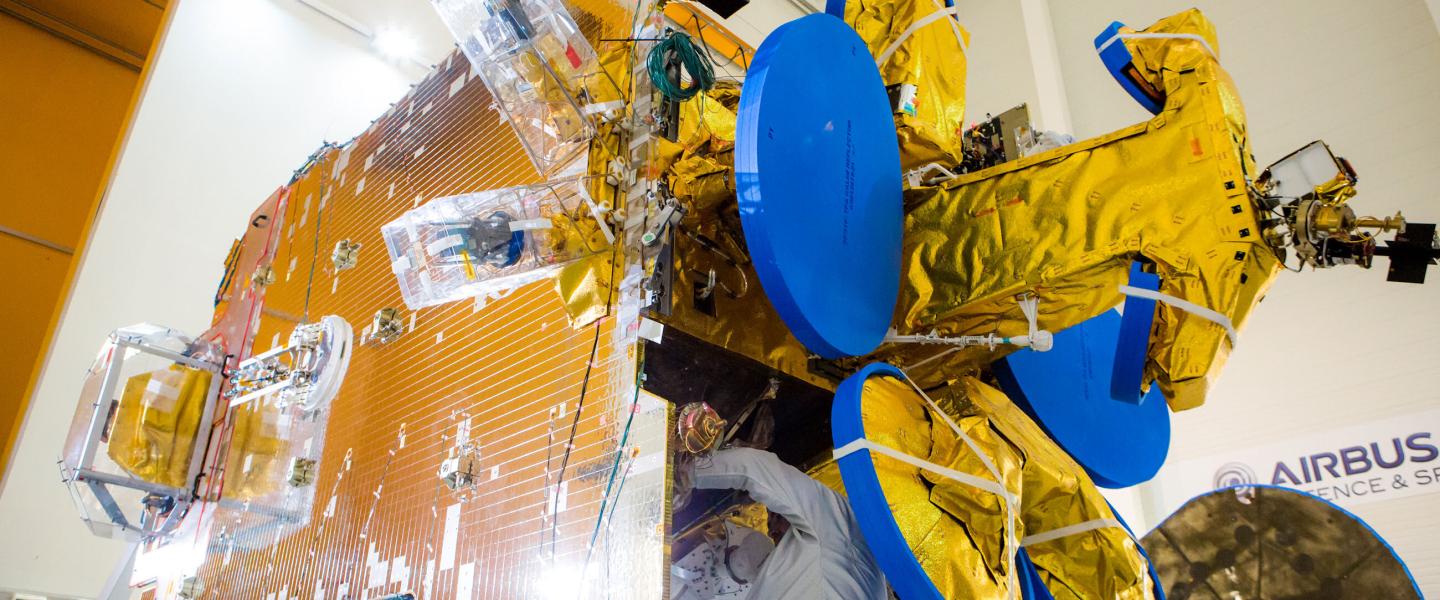With a new year always comes a good deal of enthusiasm at the prospect of what lays ahead. In 2017, SES will certainly bring its share of excitement to Latin America with four satellites scheduled for launch this year bringing more coverage to the region. Jurandir Pitsch, SES's Vice President of sales for Latin America South, gives us an overview of the growth opportunities in the market.
The first launch for SES this year will be SES-10, our first satellite designed exclusively for Latin America. With three high-powered beams it will deliver replacement capacity and bring additional capacity to the region, from the Gulf of California in Mexico, to Cape Horn in Chile. Launching later this year SES-15 will bring wide-beam and HTS coverage over North America and Latin America North. SES-11 will follow, covering North America as well as Mexico and the Caribbean. It was procured in partnership with Echostar, who has been our anchor customer since 2006. Finally SES-14 will replace NSS-806, providing wide-beam and HTS capacity over the Americas, including the entire Latin America region.
With high-power beams tailored for the region and high-throughput capacity, SES is set to strengthen its ability to cater to the various business needs across the entire Latin America region considerably:
- Supporting the expansion of 3G and 4G networks in Latin America
With the surging growth in data applications and the ever-increasing need for connectivity in our daily life, 3G and 4G networks in Latin America are set to expand significantly in the next few years, with projects already kicking-off today. Satellite technology will be fundamental to support this development, especially to reach the remote areas of the region.
Our upcoming High Throughput Satellites (HTS) will allow us to deliver higher throughput in more places, to more people, with higher cost-efficiency than ever before. This will enable our customers to maximize their investments and address the surging data application demand from subscribers.
- Meeting the soaring demand for aero and maritime connectivity
In this new age of connectivity, passengers want seamless access to high-speed broadband, anytime, anywhere – even at 30,000 feet in the sky or the middle of the ocean.
Responding to this demand, the number of connected aircraft across the world will take off. In the next decade the largest growth, however, is expected across the Latin America region, where the number of connected aircraft is projected to balloon from 44 in 2015 to 1529 by 2020.
At sea passengers also want the same level of connectivity they get on shore. In the Caribbean, where cruise tourism is thriving, satellite technology will be the key to connect cruise ships.
Equipped with powerful spot beams dedicated to mobility, SES-14 and SES-15 will be ideal to serve the thriving aeronautical and maritime markets across Latin America.
- Connecting the unconnected
The internet has become a critical infrastructure for all areas of society, and being able to access and share information is now a fundamental need. It is also an economic agent of change to people’s lives, creating new opportunities and reshaping businesses and services.
Yet there are still many locations where connectivity is very poor, or simply inexistent. Thanks to our existing satellite fleet, we cover 99% of the world’s population, reaching even the most remote places on Earth – hence providing the ideal solution to bring connectivity where there is no infrastructure. Our additional capacity will reinforce our ability to bridge the digital divide in Latin America.
- Bringing better picture quality to TV screens
The distribution of video channels via satellite will continue to grow steadily in Latin America, mainly due to the migration from SD to HD. HD adoption in the region has grown from 10% in 2010 to 22% in 2015, and is expected to jump to 38% by 2025. Ultra HD is also poised to gain momentum in the region, with 155 channels in that format expected by 2025.
Today SES carries 30 UHD channels worldwide, of which five are available in Latin America. Thanks to its high-powered beams and its optimum elevation angle, SES-10 will enable broadcasters to capture new growth opportunities and expand their video services. In addition, the C-band wide-beam coverage of SES-14 will bring augmented capacity to Latin America to serve the thriving cable neighbourhood and boost HD penetration.

